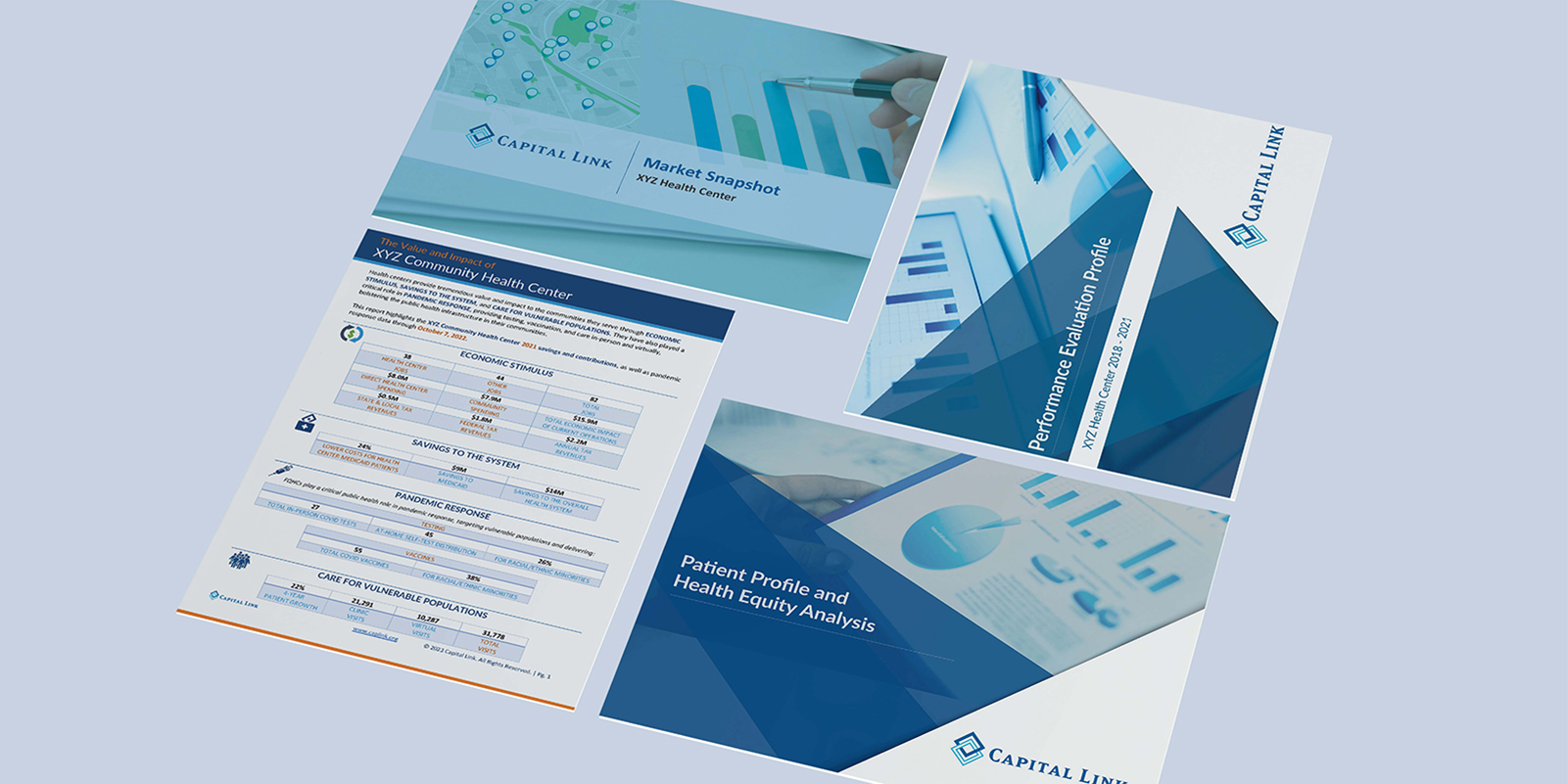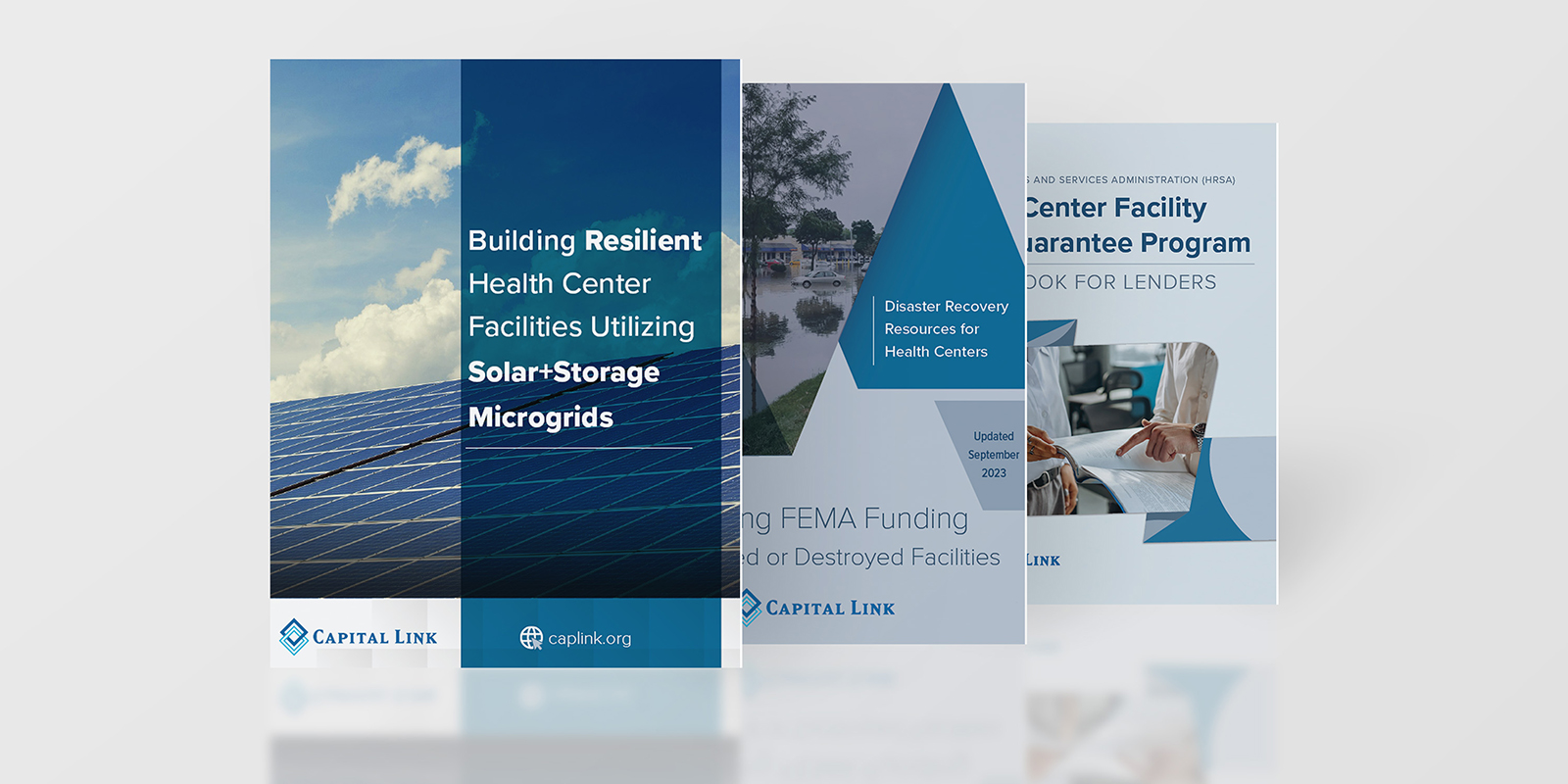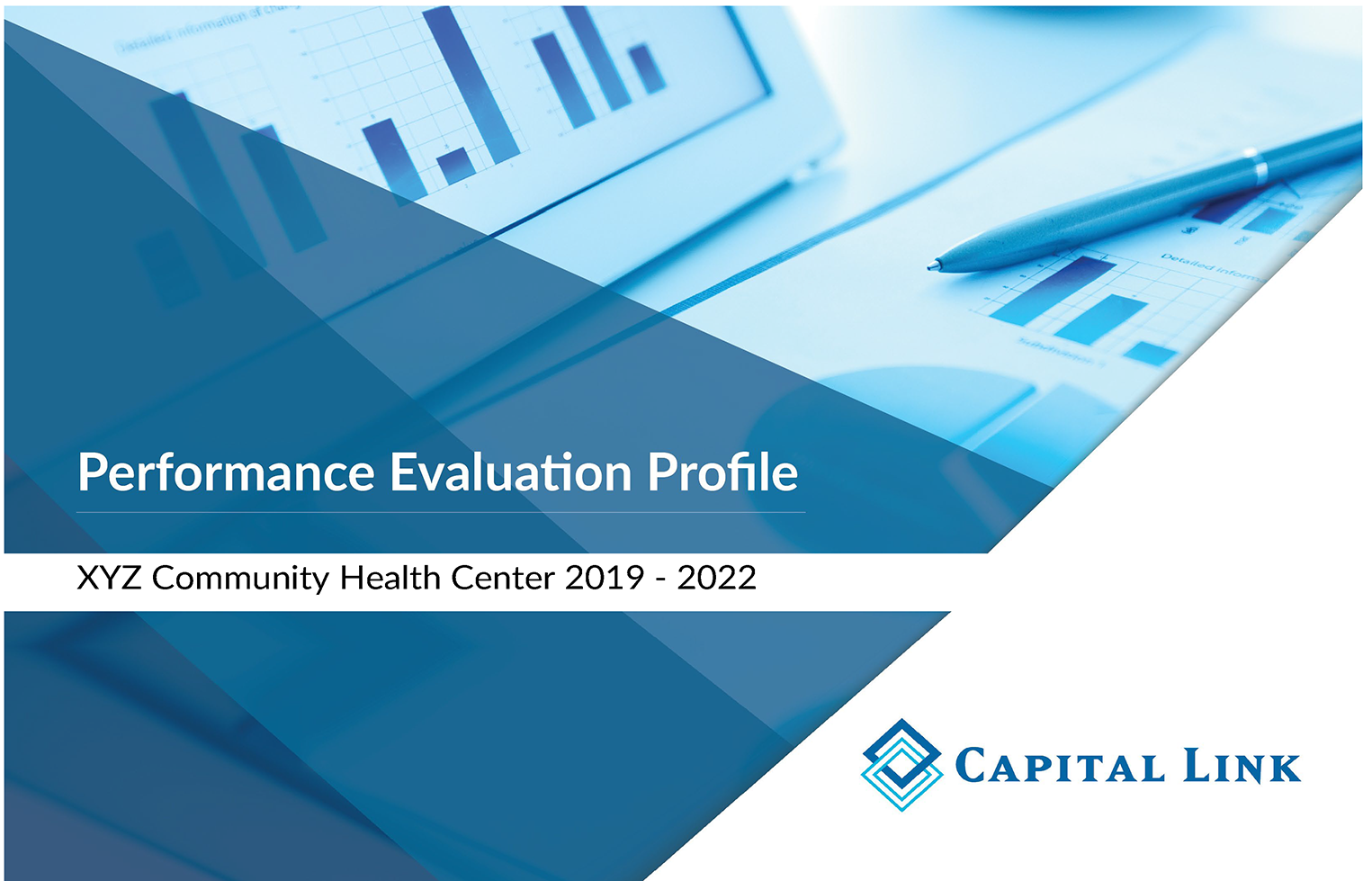Updated with 2022 HRSA UDS data, Capital Link’s Performance Evaluation Profile (PEP) is a diagnostic tool for health centers and PCAs to examine financial health, productivity, utilization, and staffing.
Using UDS information and Capital Link's own database of health center financial audits, the PEP provides multi-year performance trends for 2019 through 2022, benchmarking the results against state, national, and peer medians across 113 financial and operational metrics. It features a peer comparison dashboard and dashboard summaries of the top 62 metrics. The analysis also indicates whether the results meet Capital Link’s industry recommendations.
Click on the image below to view a sample of our PEP report.
Dashboards include:
- Selected Patients Characteristics Dashboard
- Patients with Income at or below 200% of Poverty
- Patients Best Served in a Language Other than English
- Percentage of Asian, Black/African American, White, Other Patients of Color, and Hispanic or Latino/a Patients
- Non-Clinical Staffing Productivity Dashboard
- Patient and Visits Growth Rates Dashboard
Metrics include:
- Virtual Visits for Medical, Dental, Mental Health, and Enabling Services (new to HRSA UDS in 2019)
- Substance Use Disorder Visits per Substance Use Disorder FTE (new to PEP)
- Percentage of women 51-73 years of age who had a mammogram to screen for breast cancer (new to HRSA UDS in 2020)
- Percentage of patients 21 years of age and older at high risk of cardiovascular events who were prescribed or were on statin therapy (new to HRSA UDS in 2019)
- Percentage of Patients Seen Within 30 Days of First Diagnosis of HIV (updated in HRSA UDS from 90 Days in 2020)
Available as an individual health center report, or as a statewide or regional data analysis for PCAs, the PEP increases organization-wide financial and operational performance awareness and supports capital project planning thereby enhancing overall health center operations.
Interested in learning how a PEP report can optimize your performance? Please fill out the form below and your inquiry will be directed to the appropriate team member(s).







